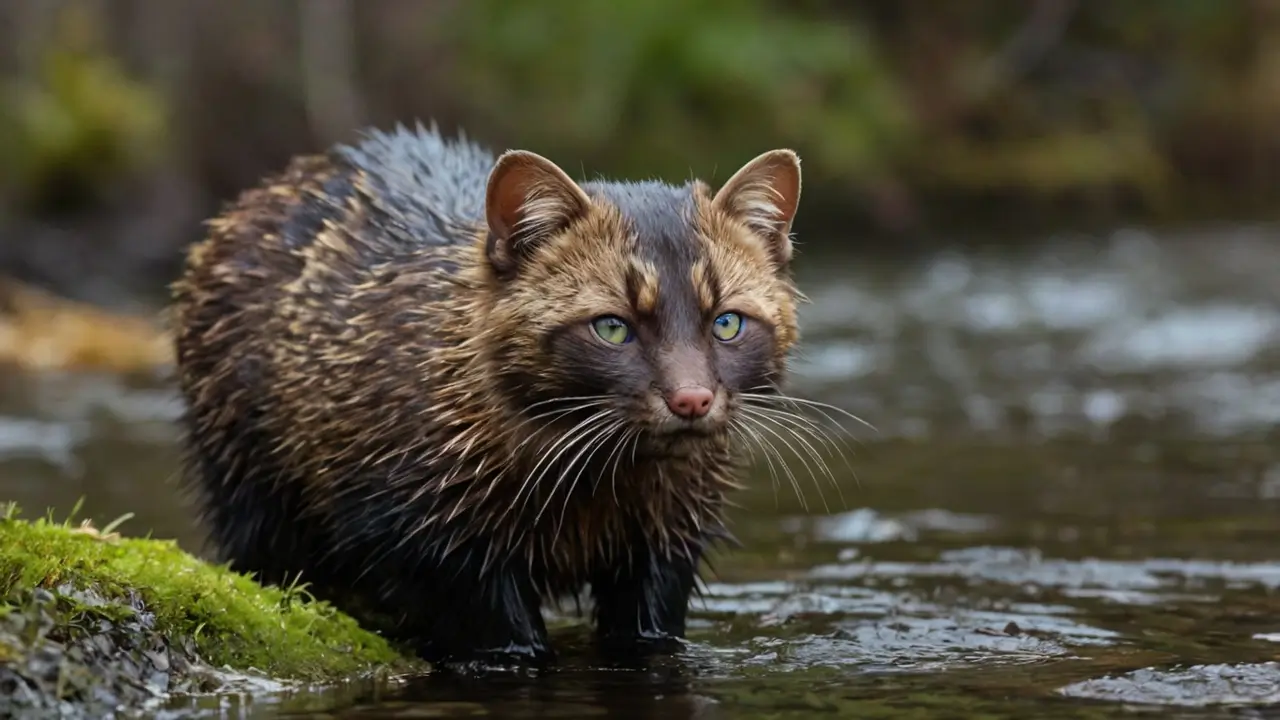The Fisher cat animal is an interesting and much misinterpreted mammal. It is neither a cat nor a serious fish, despite its name. Rather, it is a member of the mustelid family, which also contains minks, otters, and weasels. The Fisher cat, a medium-sized carnivorous mammal native to North America. It is scientifically known as Pekania pennanti.
Let’s delve deep into the details of it, including the physical attributes, habitat, and survival in this blog. It will also shed light on its adaptations, behavior, food, and prey.
Physical Attributes Of Fisher Cat Animal
Here are the details of the Fisher cat animal physique:
- Size: Including their bushy tails, the fisher cat animals usually have a length of 24 to 40 inches.
- Weight: Males are larger than females, and they weigh between 4 and 13 pounds.
- Fur: They are insulated from chilly regions by their thick, lustrous dark brown fur.
- Body: Their bodies are long and lean, with rounded ears and short legs.
The animal fisher cat is naturally nimble. They can easily move through underbrush due to their low-to-the-ground stance and sleek bodies. They are among the most adaptable predators in their habitat because of their tails. This helps them stay balanced when racing and climbing.
Where Do Fisher Cat Animal Live?
Wooded environments and deep woodland are preferred by the fisher cat animal. They are widely present in the northern United States, Canada, and areas such as the Appalachians and New England. Because they can find enough food and shelter in coniferous and mixed woods, these animals flourish there.
Survival Adaptation Of The Fisher Cat Animal
Let’s discuss the survival techniques adopted by the animal fisher cat to survive:
- Climbing Ability: Because of their rotating ankles and strong claws. The Fisher cat animal is an exceptional climber. Because of this, they can descend trees headfirst, which is uncommon for mammals.
- Nocturnal: Their nature is mostly nocturnal; they hunt at night and sleep during the day.
- Silent Movement: They are great hunters because of their cushioned feet, which enable them to walk through the jungle covertly.
NOTE: Fisher cats do well on the ground as well. When pursuing prey, they can run short distances because of their strong legs. They can quickly twist and pivot due to their flexible spines. Which is advantageous when hunting prey like squirrels.
What Are The Foods Of An Animal, Fisher Cat?
Being omnivores, an animal fisher cat eats a variety of foods. They adjust their meals based on what is available because they are opportunistic eaters. Typical prey include:
- Mice, squirrels, rabbits, and other small mammals
- Eggs and birds
- Amphibians and reptiles
- Berries and insects
- Decomposing animal matter, or carrion
NOTE: The Fisher cat animal pursues porcupines and is one of their most remarkable traits. Few other predators dare to do this. Avoiding the sharp quills, they assault the face and underside with finesse.
How Porcupines Are Hunted By The Fisher Cat Animals
One of the few predators that can regularly kill porcupines is the fisher cat animals. As they move around the porcupine, they remain low and attack its exposed face and underside. The fisher bites the porcupine’s neck, killing it once it is weak. The fisher cat has perfected the skills of patience and precision, which are necessary for this tactic.
Social Structure And Behavior Of Fisher Cat Animal
Except mating season and while moms are tending to their young, the fisher cat animal is a solitary creature. To keep competitors at bay, they use scent glands to mark their territory.
Interaction
Even though they are usually quiet, the fisher cat animal can hiss, growl, and shriek when they feels threatened. Their nighttime “screaming” has given rise to urban legends. However, these noises are sometimes confused with those of other animals.
Mating
Although the fertilized eggs undergo delayed implantation. Which means development doesn’t start until the following year, and mating season takes place between February and March. This guarantees that the kits are born in the spring, when there is a greater supply of food.
In dens formed from rock crevices or hollow trees, female fisher cats usually give birth to one to four kits. At birth, the young are blind and defenseless, and they depend on their mother for food and warmth. They are prepared to go out on their own by the time they are five months old.
Does Fisher Cat Animal Pose A Risk?
Although it usually poses no threat to people. The Fisher cat animal is capable of fierce self-defense in a pinch. Fisher cat animals that may feed on small pets like chickens or rabbits. Therefore, pet owners should exercise caution, especially in rural regions.
How to Keep Your Pet Safe
Follow the following precautions:
- At night, keep your pets inside.
- Food should not be left outside as this may draw wildlife.
- Keep your pets secure from possible predators if you love your pets.
Fisher Cat Animal Function In The Ecosystem
Fisher cat animal is essential to preserving environmental equilibrium. They aid in managing smaller animal populations as mesopredators, or mid-level predators, avoiding overcrowding and fostering the growth of forests.
Concluding Remarks On The Fisher Cat Animal
An amazing, versatile, and essential member of North America’s fauna is the fisher cat animals. They are crucial to preserving ecological balance, although they are frequently misinterpreted. If you love pets, then make sure they stay safe in places where wildlife roams. We can better appreciate and protect these amazing species if we learn more about them. The Fisher cat is an animal worth learning about, regardless of whether you’re a wildlife enthusiast.
FAQs
1. Are humans at risk from animal fisher cat?
Although they usually pose no threat to people, fisher cats animals may defend themselves if they feel threatened.
2. Is it true that the Fisher cat animal can scream?
Although many “screams” that are ascribed to fisher cats are foxes or other animals, they can nonetheless produce eerie sounds.
3. Can a Fisher cat animal climb trees?
Yes Indeed! Fisher cats can even go headfirst down trees because they are really good climbers.
4. How do I react if I spot a fisher cat?
Fisher cats typically stay away from people, so keep your distance and enjoy it from a distance.
5. If they are not fish, why are they called fisher cats?
“Fitch” is a European polecat with a similar look, which is probably where the name originates.








